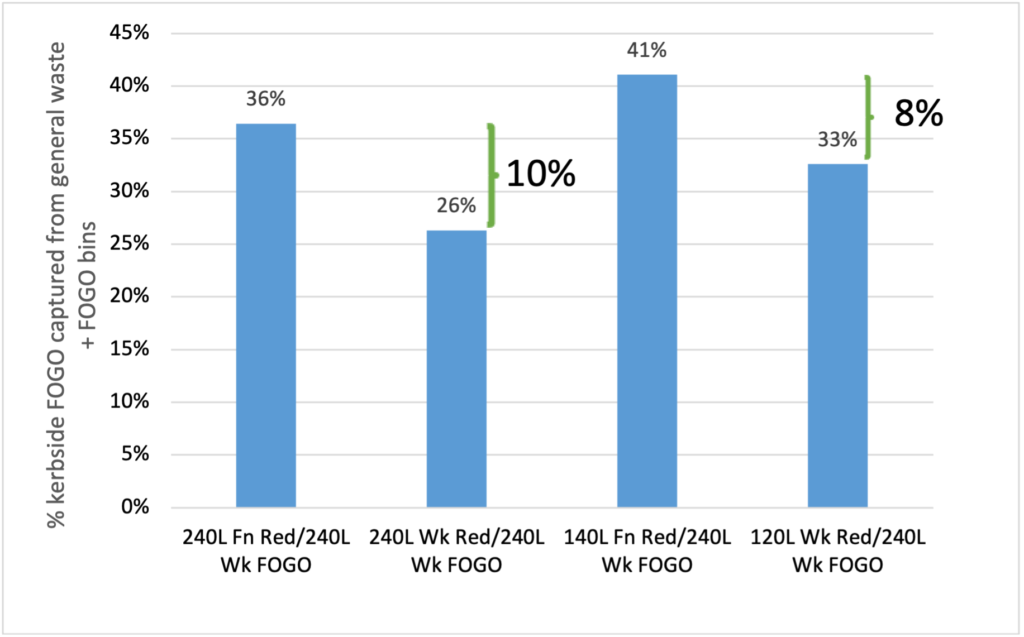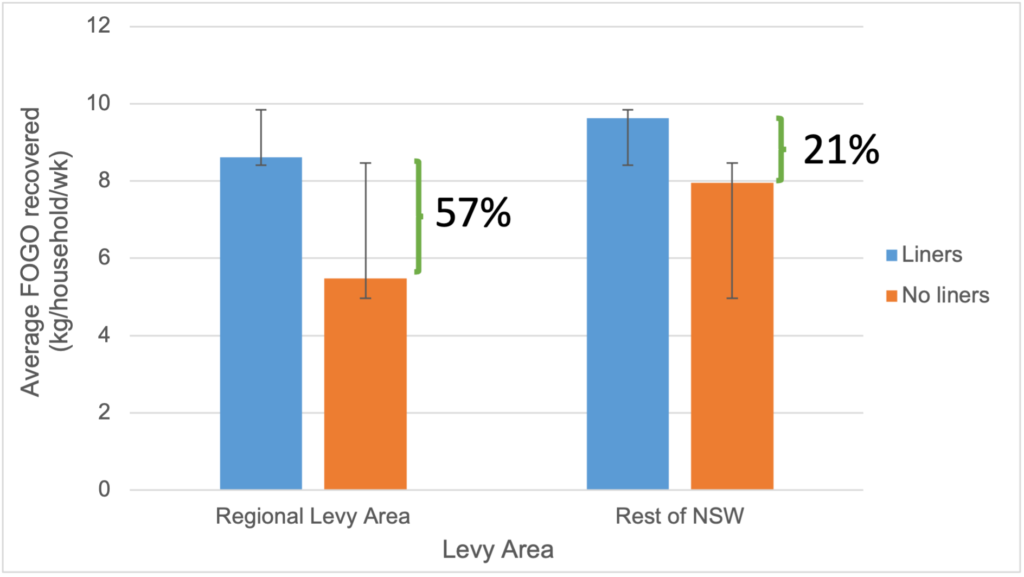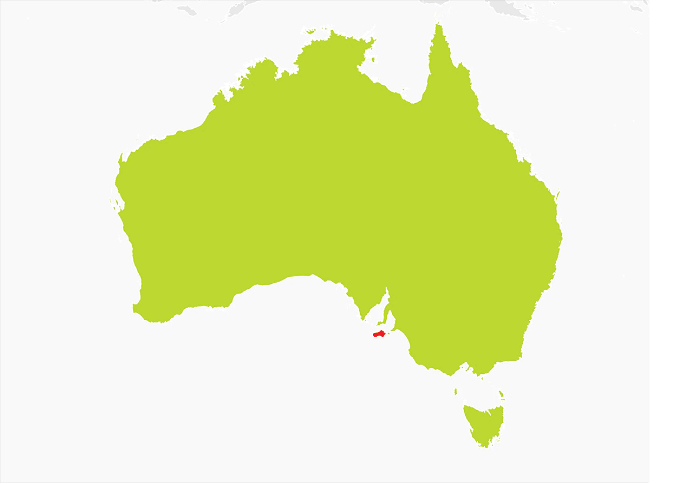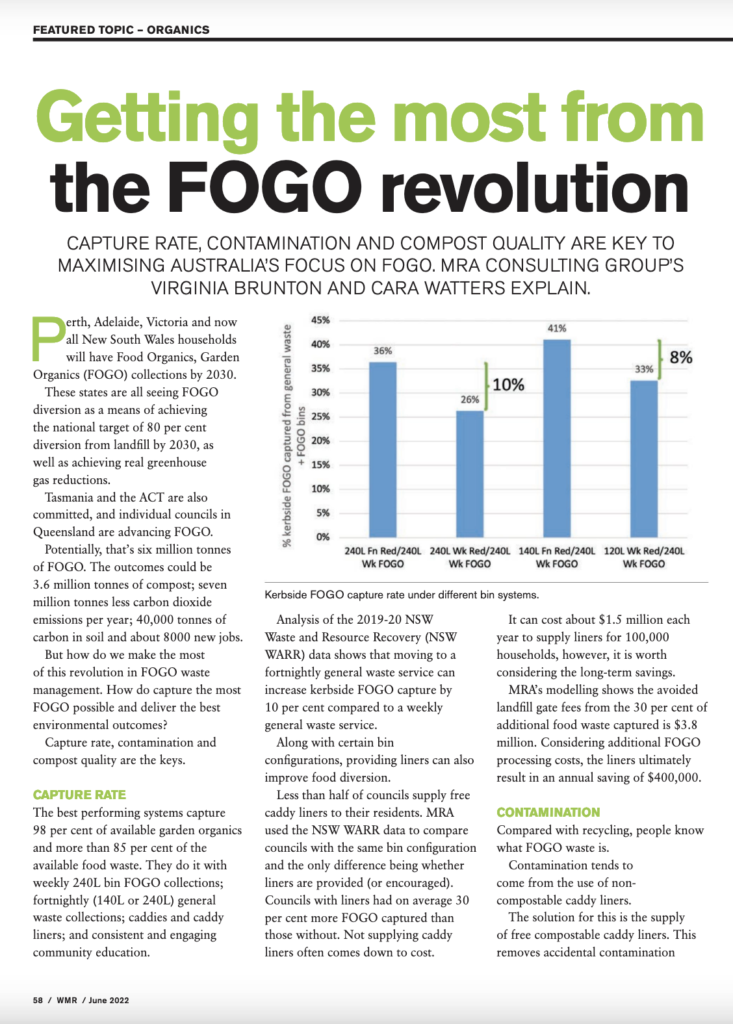Getting the most out of the FOGO revolution
By: Virginia Brunton and Cara Watters, MRA Consulting Group

These States are all seeing FOGO diversion as a means of achieving the national 80% diversion from landfill by 2030 target, as well as achieving real greenhouse gas reductions. Tasmania and the ACT are also committed, and individual councils in Queensland are also advancing FOGO, including Brisbane, Townsville, Sunshine Coast, and the Gold Coast.
Potentially, that’s some 6 million tonnes of FOGO! The outcomes could be 3.6 million tonnes of compost; 7 million tonnes less CO2-e per year; 40,000 tonnes of carbon in soil and over 8,000 new jobs.
But how do we make the most of this revolution in FOGO waste management in Australia? How do we design systems that capture the most FOGO possible and deliver the best environmental outcomes with it?
Capture rate, contamination and compost quality are the keys.
Capture Rate
Get all that food into the FOGO bin!
The best performing systems capture 98% of available garden organics and over 85% of the available food waste. How do they do it?
They have:
- Weekly 240L bin FOGO collections;
- Fortnightly (140L or 240L) general waste collections;
- Caddies and caddy liners; and
- Strong, consistent, and engaging community education.
Bin configuration
Analysis of the 2019/20 NSW WARRR data shows that switching to a fortnightly general waste service can increase kerbside FOGO capture by 10% compared to a weekly general waste service (Figure 1).

Caddy liners
Along with certain bin configurations, providing liners can also improve food diversion.
Less than half of councils supply free caddy liners to their residents. MRA used the NSW WARR data to compare councils with the same bin configuration and only difference being whether liners are provided (or encouraged). Councils with liners had (on average) 30% more FOGO captured than those without (Figure 2). Simply put, with the same bin system and within the same levy area (and therefore similar demographics), this increase can largely be attributed to liners improving food waste capture. (The amount of education from council could also impact FOGO capture, but more on this later.)

Not supplying caddy liners often comes down to cost. Which is understandable when it can cost approximately $1 million each year to supply liners for 100,000 households. However, it is worth considering the long-term savings achieved by these liners. MRA’s modelling shows the avoided landfill gate fees from the 30% of additional food waste captured is $1.6 million. Therefore, the liners ultimately result in an annual saving of $600,000.
Contamination
Compared with recycling, people know what FOGO waste is. Deciding which bin to put food and garden waste into is relatively simple.
Contamination tends to come from the use of non-compostable caddy liners. The solution for this is the supply of free compostable caddy liners. This removes accidental contamination from resident confusion regarding ‘biodegradable’, ‘degradable’ and other labels on caddy liners in supermarkets.
- The average FOGO bin contamination across all councils in Australia is only 2%;
- Best performing councils have contamination levels as low as 0.04%; and
- Based on select councils in NSW and Victoria, caddy liners reduce contamination by around 1%.
Education
Much of the success of a FOGO system relies on the community being onboard and enthusiastic.
A Victorian review of FOGO behaviour shows that 60% of residents would use a kerbside FOGO bin[1]. Of the remainder, 32% sat on the fence and 8% said they wouldn’t use a FOGO bin. That means 40% need convincing to use a FOGO bin.
A thorough education program improves capture rate and reduces contamination rate. MRA’s research shows that for every $1 increase in spend per household per year on education, contamination reduces by 1% and capture rate increases by 5%.
The compost market
Another often cited barrier to FOGO is that there is no market for compost. For high quality compost, this could not be further from the truth.

If the 7 million tonnes of FOGO currently landfilled nationally was recovered and composted, it would result in 4.2 million tonnes of compost. If this was applied at the standard 10 tonne per hectare rate, it would only cover the area of Kangaroo Island (Figure 3).
Australia has 373 million hectares of agricultural land and two thirds of this is degraded by soil erosion, salinity, acidity, or contamination and all can benefit from the additional organic matter that compost can supply. At the right price point, compost would be a no-brainer for farmers.
With all our agricultural land, the market for quality compost is virtually unlimited.
Compost quality
Achieving a standard of compost that meets the price and quality expectations of agricultural users is the key. This might seem to be out of the hands of councils that use downstream processors, but it is not. Councils hold the relationship with processors through their contracts. Quality gets built into contracts.
MRA has developed contract clauses that include compost quality performance criteria and key performance indicators (KPIs). These clauses have been used in recent FOGO processing contracts in NSW and Queensland. The KPIs go beyond AS4454 (the minimum voluntary compost standard) with reduced contamination thresholds and criteria to ensure a stable, mature, and fit-for-purpose compost.
Yes, these extra criteria might cost a few cents more per household, but they ensure a high-quality compost for farmers and council itself.
Together these three elements; the right bin configuration, use of liners, and contracting compost quality, will go a long way to getting the best outcomes from FOGO systems.
[1] MWRRG, 2019, Food waste recycling social research.
Virginia is the Principal Consultant and Cara is a Consultant of the Organics & Education team at MRA Consulting Group.
This article has been published by the following media outlets:




